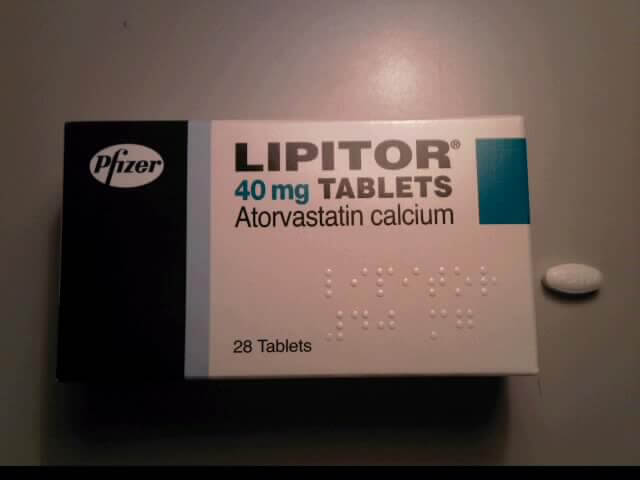The use of statins may not be associated with lowering risk for Parkinson’s disease, according to a new study led by researchers at Penn State College of Medicine and National Institute of Environmental Health Sciences. The findings cast doubts on reports suggesting that the cholesterol-lowering medications may protect against this neurodegenerative brain disorder.
According to the National Parkinson Foundation, Parkinson’s disease affects about one million Americans and an estimated four to six million people worldwide. Although the cause of PD is unknown, damage to dopamine-producing neurons eventually leads to the movement disorders that are a hallmark of the disease.
Xuemei Huang, professor of neurology and vice chair for research, Penn State College of Medicine, previously reported an association between high blood cholesterol levels and lower incidence of PD. A low incidence of heart attack and stroke in PD patients in movement disorder clinics, despite their usually advanced age motivated these studies. Other studies also reported similar findings.
However, evidence has been somewhat inconsistent. The use of statins has also been associated with a lower incidence of PD in several recent epidemiology studies, leading some researchers to hypothesize that these medications, which lower levels of LDL — bad cholesterol — may protect against PD. Those studies, however, failed to account for cholesterol levels prior to the widespread use of statins in the U.S. population, Huang said, noting that as a strength of the new study.
The researchers looked at blood cholesterol levels, medications and PD status in participants in the ongoing, long-term Atherosclerosis Risk in Communities study. Cholesterol readings were taken at three-year intervals over the course of a decade from 1987 to 1989, before widespread statin use began.
“We confirmed our previous finding that high total cholesterol and LDL cholesterol were associated with a lower risk of PD,” Huang said. “Moreover, statin use over the course of the study did not protect against PD, and in fact appeared to increase PD risk in the long term. Although the analysis on statin use and PD was based on a fairly small number of PD cases, this preliminary data argues against the hypothesis that statins protect against PD.”
The researchers reported their finding in the journal Movement Disorders.
“One possibility,” Huang said, “is that statin use can be a marker of people who have high cholesterol which itself may be associated with lower PD risk. This could explain why some studies have found an association between use of these medications and low incidence of PD. Most importantly, this purported benefit may not be seen over time.”
Future research should focus on if and why cholesterol may protect against PD. Although blood cholesterol is not indicative of cholesterol in the brain, there is increasing evidence that PD may begin outside the brain. Statin-induced decreases in blood cholesterol levels may have unknown consequences in these peripheral areas. A compound called coenzyme Q10 that is produced alongside cholesterol may also be an area of future PD research. Statins reduce coenzyme Q10, which helps produce energy for cells and is hypothesized to have protective qualities in nerve cells.
“Statins have been proven to be effective in the primary and secondary prevention of cardiovascular events and stroke. Although some have proposed that statins might be a ‘cure-all’ drug,” Huang said, “this might be a case where what’s good for the heart isn’t good for the brain.”
An estimated 43 million Americans currently take statins or are eligible for statin therapy. Recent updates to American Heart Association guidelines are expected to increase that number to 56 million or more. The new guidelines recommend statin use for some patients without high cholesterol but who have other risk factors for heart disease and stroke.
“Statins have been very important for preventing and treating vascular disease, but we need more research to understand if in some cases there is collateral damage,” Huang said.
Until more epidemiological and basic research can be conducted to further parse out the associations between PD, cholesterol and statins, physicians and scientists should be cautious in promoting health benefits of statins for PD without a good understanding of clinical evidence and potential biological mechanisms, Huang advises.
Patients and physicians considering statins for cardiovascular health and stroke prevention should consider their individual cases.
“This is evidence that personalized medicine is better than a one-size-fits-all approach,” Huang said.
Other investigators on this project were Alvaro Alonso, M.D., Ph.D., University of Minnesota; Xuguang Guo, Ph.D., Westat Inc.; David M. Umbach, Ph.D., National Institute of Environmental Health Sciences; Maya L. Lichtenstein, M.D., Department of Neurology, Penn State; Christie M. Ballantyne, M.D., Baylor College of Medicine and Methodist DeBakey Heart Center; Richard B. Mailman, Ph.D., professor, Departments of Pharmacology and Neurology, Penn State; Thomas H. Mosley, Ph.D., University of Mississippi Medical Center; and Honglei Chen, M.D., Ph.D., National Institute of Environmental Health Sciences.
The Atherosclerosis Risk in Communities study is supported by the National Heart, Lung and Blood Institute and the National Institute of Environmental Health Sciences; and Huang receives National Institutes of Health funding.


